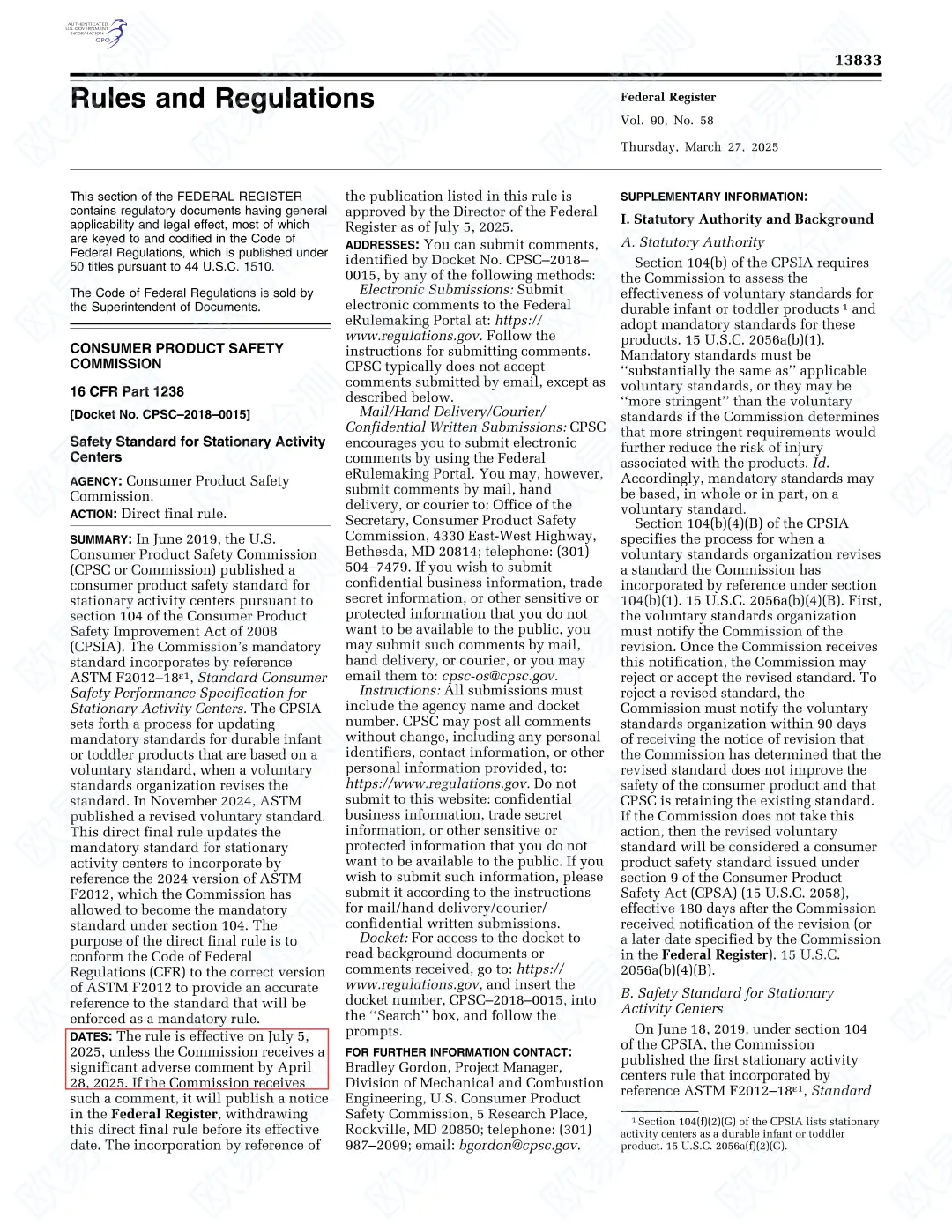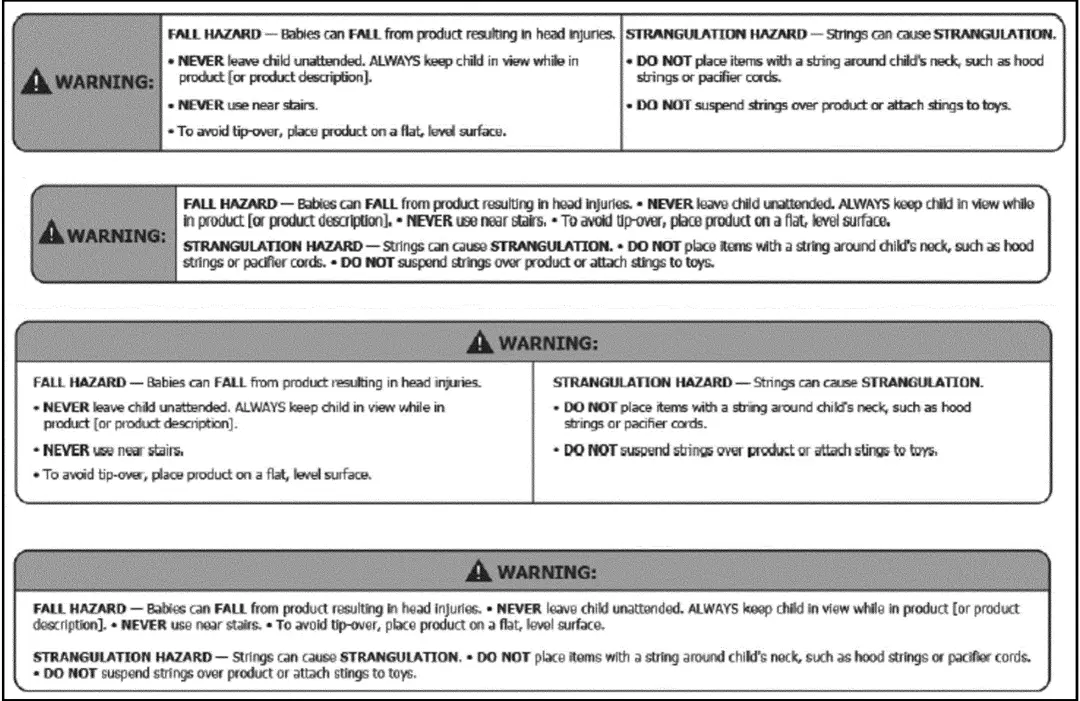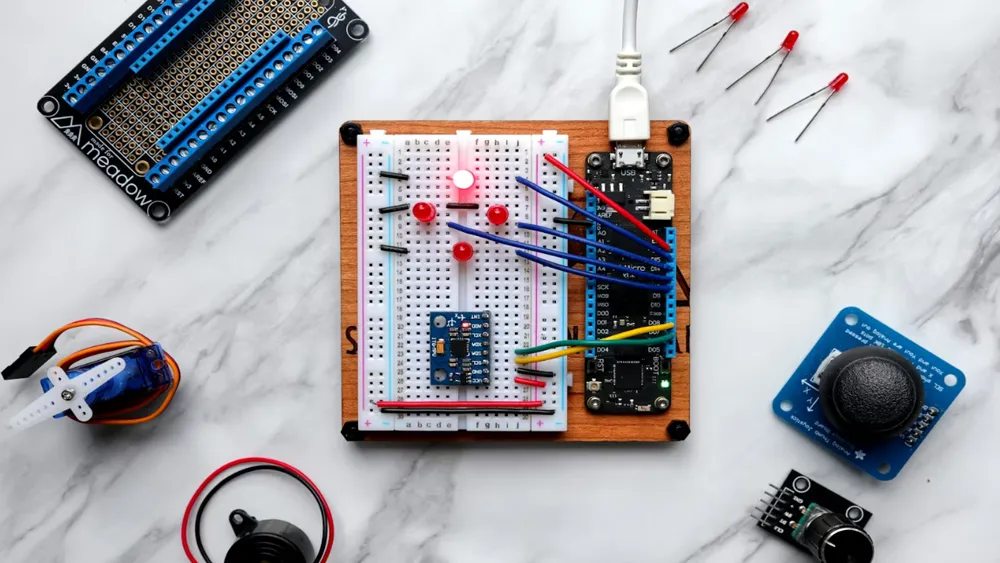
What Is the ASTM F2012-24 Test Report?
Starting in 2025, regULatory oversight of children's products is tightening once again! The ASTM F2012-24 standard has officially been implemented, imposing stricter certification requirements for infant activity centers—especially concerning warning labels and compliance documentation. This article provides a comprehensive overview of the new standard, its implementation timeline, and strategies for businesses to respond proactively and avoid penalties or product delistings.
What Is ASTM F2012-24?
ASTM F2012-24 is the “Standard Consumer Safety Performance Specification for Stationary Activity Centers,” published by the American Society for Testing and Materials (ASTM) on November 1, 2024. It falls under the international classification for child-use equipment. This standard is designed to mitigate safety hazards associated with the use of standing activity centers by infants and toddlers, aiming to REDuce the risk of injury or death.
ASTM F2012-24 Testing Requirements:
1. Structural Integrity Tests
Includes dynaMIC load, static load, and leg opening tests to ensure the activity center can withstand a child’s weight and movement without structural failure.
2. Stability Tests
Covers tip-over and seat tilt tests to evaluate stability across various scenarios, preventing injuries from accidental tipping or improper use.
3. Unintentional Folding Prevention Test
Verifies that locking mechanisms effectively prevent accidental folding, reducing risks of pinching or crushing injuries.
4. Opening Test
Assesses potential entrapment points, ensuring fingers or other body parts cannot be caught in openings.
5. Small Parts Test
Prohibits small parts in products intended for children under 3 years old to prevent choking, nasal, or ear canal hazards.
6. Sharp Points and Edges Test
Ensures that no components have sharp tips or edges that could cut or puncture a child.
7. Shear and Squeeze Hazard Tests
Confirms that parts of the activity center do not pose shear, crush, or pinch risks during normal or foreseeable use.
8. Exposed Coil Springs Test
Evaluates whether coil springs are adequately covered to prevent injury from direct contact.
9. Protective Components Test
Assesses safety components such as guardrails and cushions to ensure they function properly and reduce injury risk.
10. Spring Failure and Spring-Supported Center Tests
Tests spring durability and reliability to ensure they do not fail or cause unexpected motion during use.
11. Resistance-to-Motion Test for Open-Base Designs
Ensures that children can stand and move securely without excessive or insufficient resistance, which could cause falls.
cpsia compliance
Under the Consumer Product Safety Improvement Act (cpsia), stationary activity centers must also comply with requirements for surface coatings and lead content. The total lead content in any accessible component must not exceed 100 ppm (0.01%). The standard also includes requirements for warning labels and instruction manuals to alert consumers of potential hazards.

Regulatory Update: Stricter Standards for Stationary Activity Centers
Scope
- Product Type: Stationary Activity Centers
- Target Age Group: Infants aged 4 months to pre-walking stage (approx. 12–18 months)
- Official Definition: A “stationary product that fully surrounds a child’s torso and allows for sitting, limited walking, bouncing, or spinning” (ASTM F2012-24 §3.1.12)
Timeline
- January 6, 2025: ASTM publishes revised F2012-24
- July 5, 2025: Becomes mandatory under CPSC (if no significant objections)
Key Technical Changes: Enhanced Warning Label Tests
1. Upgraded Permanence Test Method
- Old Standard (F2012-18e1): Pull force applied in any direction
- New Standard (F2012-24):
- Pull force must be applied in the most failure-prone direction
- Pull gradually increased over 5 seconds and maintained for 10 seconds
- CPSC Interpretation: Considered more rigorous, better tests label durability

2. Expanded Label Templates
- Adds 4 new layout variants to enhance flexibility in size and design
- Current template issues: Triangle warning symbols have alignment and color format errors—CPSC has requested ASTM to correct in future revisions
3. Other Editorial Revisions
- Harmonized terminology, removed redundancies, added units—no impact on core safety requirements
Impact on Businesses: Serious Consequences for Non-Compliance
Risks Include:
- Products not certified to the updated standard may face:
- Forced delisting from platforms like Amazon
- Customs detention or seizure
- Fines up to $150,000 per violation by CPSC
Business Response Guide: Compliance Work Cannot Wait!
Product-Level Actions:
- Review current product designs—especially label materials and attachment methods
- Make structural adjustments if necessary to meet new testing criteria
Documentation-Level Actions:
- Update Children’s Product Certificate (CPC) with clear reference to F2012-24
- Retain all test reports and technical files for regulatory or platform audits
Compliance testing and certification services available from JJR Labs (China).
Email:hello@jjrlab.com
Write your message here and send it to us
 What is Amazon TIC and How Can Sellers Achieve Com
What is Amazon TIC and How Can Sellers Achieve Com
 2026 Battery UN38.3 Certification (Test Report) &a
2026 Battery UN38.3 Certification (Test Report) &a
 What is the IEC 62680 Standard? Compliance Interpr
What is the IEC 62680 Standard? Compliance Interpr
 Amazon Japan December Compliance Requirements
Amazon Japan December Compliance Requirements
 How to Check a CPSC-Accepted Laboratory?
How to Check a CPSC-Accepted Laboratory?
 WEEE Registration for Waste Electrical &Electr
WEEE Registration for Waste Electrical &Electr
 MSDS Chemical Safety Testing
MSDS Chemical Safety Testing
 What Are the Differences Between UK REACH and EU R
What Are the Differences Between UK REACH and EU R
Leave us a message
24-hour online customer service at any time to respond, so that you worry!




